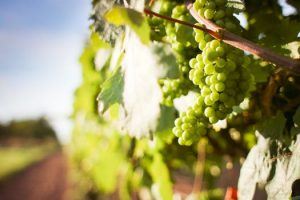by Dwight Furrow
 The wine world is an interesting amalgam of stability and variation. As I noted last month, agency in the wine community is dispersed with many independent actors having some influence on wine quality. This dispersed community is held together by conventions and traditions that foster the reproduction of wine styles and maintain quality standards. Most major wine styles are embedded in traditions that go back hundreds of years and are still vibrant today. Although the genetic instability of grapes and their sensitivity to minor changes in weather, soil and topography are agents of change, most of these changes are minor variations within a context of stability. We create new varietals, discover new wine regions, and develop new technologies and methods but these produce minor deviations from a core concept that sometimes seems immune to radical change. There are, after all, only so many ways to ferment grape juice. Red and white still wine, sparkling wine, and fortified wine have been around for centuries and are still the main wine styles on offer. Every wine we drink is a modification of those major themes.
The wine world is an interesting amalgam of stability and variation. As I noted last month, agency in the wine community is dispersed with many independent actors having some influence on wine quality. This dispersed community is held together by conventions and traditions that foster the reproduction of wine styles and maintain quality standards. Most major wine styles are embedded in traditions that go back hundreds of years and are still vibrant today. Although the genetic instability of grapes and their sensitivity to minor changes in weather, soil and topography are agents of change, most of these changes are minor variations within a context of stability. We create new varietals, discover new wine regions, and develop new technologies and methods but these produce minor deviations from a core concept that sometimes seems immune to radical change. There are, after all, only so many ways to ferment grape juice. Red and white still wine, sparkling wine, and fortified wine have been around for centuries and are still the main wine styles on offer. Every wine we drink is a modification of those major themes.
Nevertheless, sometimes wine styles change, often massively. In a community so bound by tradition how does that change take place? One example of a massive change in taste took place in the U.S. in the decades following WWII, where in the course of about twenty years American wine consumers changed their preference from sweet wine to dry. How did such a revolution in taste occur in such a relatively short period of time? Read more »

 Discussions of the factors that go into wine production tend to circulate around two poles. In recent years, the focus has been on grapes and their growing conditions—weather, climate, and soil—as the main inputs to wine quality. The reigning ideology of artisanal wine production has winemakers copping to only a modest role as caretaker of the grapes, making sure they don’t do anything in the winery to screw up what nature has worked so hard to achieve. To a degree, this is a misleading ideology. After all, those healthy, vibrant grapes with distinctive flavors and aromas have to be grown. A “hands off” approach in the winey just transfers the action to the vineyard where care must be taken to preserve vineyard conditions, adjust to changes in weather, plant and prune effectively and strategically, adjust the canopy and trellising methods when necessary, watch for disease, and pick at the right time.
Discussions of the factors that go into wine production tend to circulate around two poles. In recent years, the focus has been on grapes and their growing conditions—weather, climate, and soil—as the main inputs to wine quality. The reigning ideology of artisanal wine production has winemakers copping to only a modest role as caretaker of the grapes, making sure they don’t do anything in the winery to screw up what nature has worked so hard to achieve. To a degree, this is a misleading ideology. After all, those healthy, vibrant grapes with distinctive flavors and aromas have to be grown. A “hands off” approach in the winey just transfers the action to the vineyard where care must be taken to preserve vineyard conditions, adjust to changes in weather, plant and prune effectively and strategically, adjust the canopy and trellising methods when necessary, watch for disease, and pick at the right time. Although frequently lampooned as over-the-top, there is a history of describing wines as if they expressed personality traits or emotions, despite the fact that wine is not a psychological agent and could not literally have these characteristics—wines are described as aggressive, sensual, fierce, languorous, angry, dignified, brooding, joyful, bombastic, tense or calm, etc. Is there a foundation to these descriptions or are they just arbitrary flights of fancy?
Although frequently lampooned as over-the-top, there is a history of describing wines as if they expressed personality traits or emotions, despite the fact that wine is not a psychological agent and could not literally have these characteristics—wines are described as aggressive, sensual, fierce, languorous, angry, dignified, brooding, joyful, bombastic, tense or calm, etc. Is there a foundation to these descriptions or are they just arbitrary flights of fancy?